|
|
|
![]() back to "The Grand Tour" index
back to "The Grand Tour" index
Neville Malkin's "Grand Tour" of the Potteries
buildings in Stoke
![]()
![]()
![]()
next: Stoke Public Library
previous: Stoke Town Hall
contents: index of buildings in Stoke
|
No 88 - The
Arches, Stoke Churchyard
- picture from Wards 'The Borough of Stoke-upon-Trent', 1843 - |
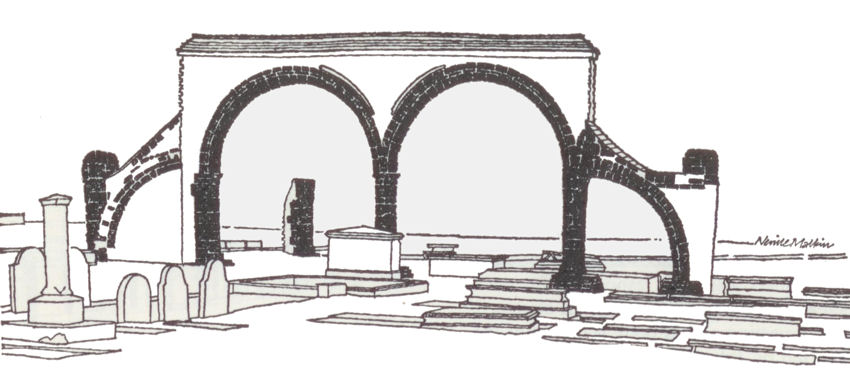
The Arches, Stoke Churchyard
pen drawing by Neville Malkin -
March 1974
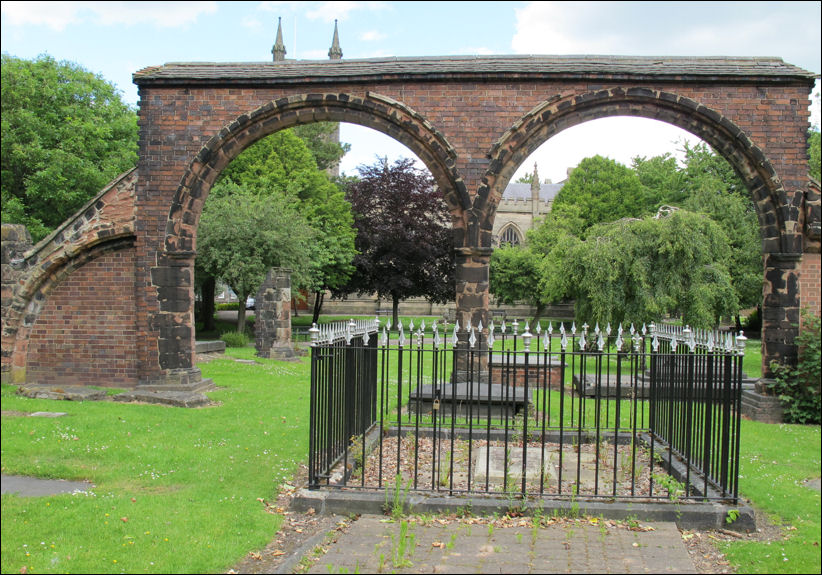
The Arches, Stoke
Churchyard
in front of the
arches is the grave of Josiah Wedgwood I
photo: June 2011
|
The old parish church of
Stoke upon Trent had been demolished in 1830 and some of its stone used to
form the bed of a watercourse serving Boothen Mill.
Charles Lynam discovered these in 1881 and used them to reconstruct two arches and other features of the old church, set up on the site of the old church. |
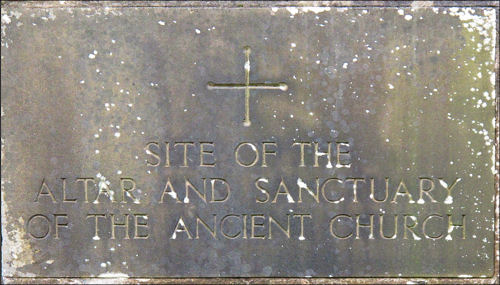
Site of the Altar and Sanctuary
of the Ancient Church
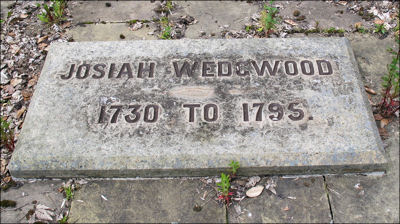
the grave of Josiah Wedgwood I
|
"Stoke churchyard has probably been the site of religious rites for longer than any other place in the Potteries. An early tribe, probably Celts, who settled at the junction of the Trent and Fowlea called it "Stoches", meaning stockaded position. There is evidence to suggest that a church stood on this site as early as 801 - a stone head was found in the walls of the old church bearing the date DCCCI. In 805 an order was given for all wooden churches to be rebuilt in stone, so it is possible that a wooden church had existed prior to this date. We can suppose that the Saxons were responsible for the building of the first stone church on this site, which was altered and added to as time went by, until it was finally demolished in 1826. The location of this old moated church can be identified in the churchyard where the arches stand. The stones of the arches were rediscovered in the overflow course of the millpond at the old Boothen Mill and, in 1887, erected in the churchyard, conforming to their original shape. The Red Lion public house, which, until recently, stood at the southeast corner of the churchyard, replaced an earlier inn. It was common to provide an inn near to the church for the accommodation of those attending from some distance; in the Middle Ages, a beerhouse was usually attached to the church. During alterations to the church roof in 1560, payments for labour were made through a system known as "Church Ales." This meant that the labour was voluntary, but, as an incentive to ensure that the work was completed satisfactorily, the church provided ale for the workers. The church suffered during the religious wars of the 17th century. It was recorded in the churchwardens' accounts of 1648 that certain money was paid for "dressing and cleaning the church after the Scots had gone." Josiah Wedgwood, who was not a member of the Church of England, was not taken beyond the porch of the old church, beneath which is the vault containing the remains of himself, his wife and son. The building of the present church of St. Peter began in 1826, and it was consecrated on the 6th October, 1830. The church includes several interesting features, viz. the memorial tiles which run the length of the north, south and west walls. The first is in the memory of a potter named Ralph Wilkinson, who died at the age of 83 in 1858. Another commemorates Bishop John Lonsdale, whose name was given to Lonsdale Street. It was hoped to lay the foundation stone of a new church on the 6th October, 1930, but the cost of £150,000 proved too much for those difficult times." |
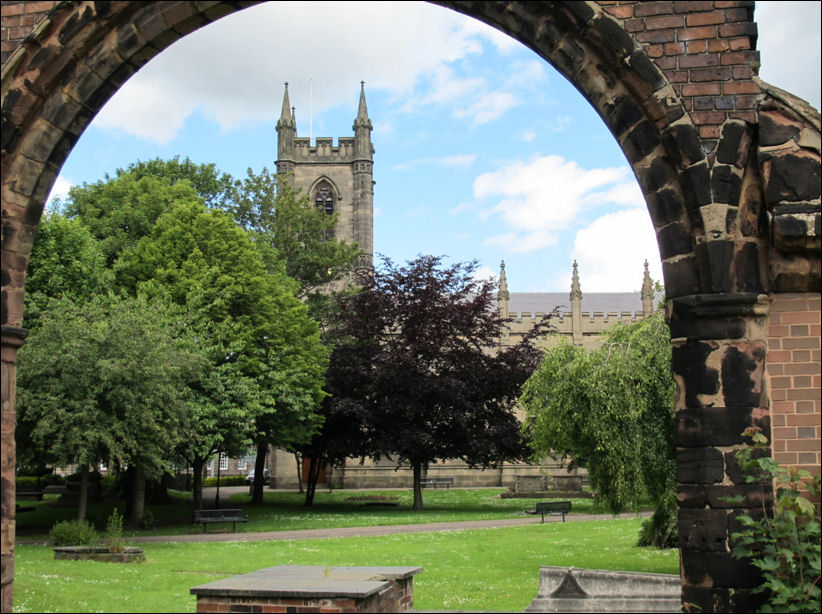
Stoke Minster Church of St.
Peter Ad Vincula (St. Peter in Chains),
built in 1826-1830 by Trubshaw and Johnson.
![]()
![]()
![]()
next: Stoke Public Library
previous: Stoke Town Hall
contents: index of buildings in Stoke
|
Related Pages Listed buildings at Stoke Minster Church also see.. Winton's Wood and the Glebe land belonging to Stoke Church Christian History of Stoke-on-Trent Charles Lynam -architect & historian
|